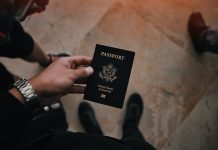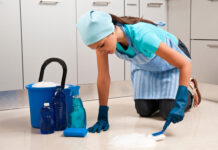We all want to keep our families safe and we do our best to prepare for whatever comes our way. Even though meteorologists work hard to predict natural disasters like hurricanes and tornadoes, these storms often strike in unexpected ways, leaving everyone in their wake wanting for basic needs until things can be cleaned up and help can arrive. With some thoughtful preparation, your family can remain safe and taken care of no matter what Mother Nature throws your way. Here are 10 ways to prepare your family for natural disasters.
1. Educate Your Family About Severe Weather
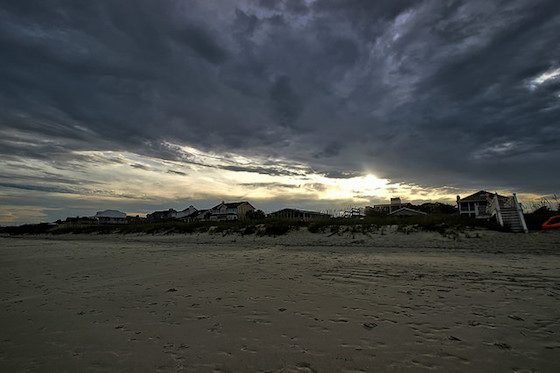
The first step to preparing for severe weather is to understand severe weather. If you know what can come at you, you can prepare properly. For the purposes of this post, we will focus on tornadoes and hurricanes.
Educate yourself on the local alerts and alarms around you. Tornado sirens will go off if a tornado touches down in the vicinity. Google can show you where those sirens are located. Look up your state with a google search. For example, search “tornado sirens in Alabama.” Here is where the tornado sirens are located in the state of Alabama.
Do you know the difference between a warning and a watch?
- A tornado watch means to be prepared. A watch is an indicator that tornadoes are possible based on current conditions in a large area.
- A tornado warning means a tornado has touched down. Someone has either seen a tornado or weather radar has picked one up.
- A hurricane warning means hurricane conditions are expected within 36 hours.
- A hurricane watch means that hurricane conditions are expected in the next 48 hours.
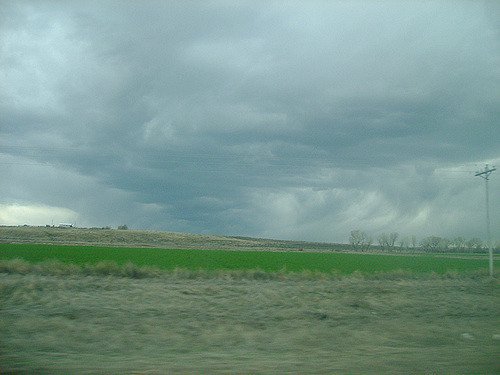
You cannot totally rely on sirens alone to indicate that a tornado may be headed your way. You also need to educate yourself on the warning signs that a tornado is close by. Danger signs of a tornado include a dark or green colored sky, a large, dark, low lying cloud, large hail, and a loud roar similar to a freight train.
For hurricanes, you need to understand the different categories of storms and what a change in category can mean for you. Hurricane categories are actually an indication of the wind speeds possible, and they predict the kind of damage you can expect.
- A category 1 storm means winds from 74-95 miles an hour. Those winds are very dangerous and will produce some damage.
- The wind speeds increase with each category, maxing out at a Category 5 with winds of 157 miles per hour or higher, bringing catastrophic damage.
- For a detailed description of hurricane categories, see the Saffir-Simpson Hurricane Wind Scale available from the National Hurricane Center.
During the course of a hurricane, the conditions change rapidly. Make sure you understand how a hurricane operates. For example, as a hurricane is passing over you, the storm will stop suddenly when you are under the eye of the hurricane. That calm in the storm does not mean it is safe to go outside. The second half of the storm is still to come, so don’t jump in the car to go check on a family member down the road.
Your children also need to be educated about natural disasters. Utilize age appropriate resources to teach your kids about severe weather. The National Oceanic and Atmospheric Administration (NOAA) has several resources to teach kids of different ages about hazardous weather. Your local library is also a great resource for information about weather and natural disasters. Check out children’s non-fiction books for books about the types of weather that affect where you live. If you have a very young child, you can even find storybooks in which weather plays a role. For example, if tornadoes threaten where you live, check out “Otis and the Tornado” by Loren Long. “Yesterday We Had A Hurricane” by Deirdre McLaughlin Mercier is great to teach younger children about this type of storm without scaring them.
Good information is empowering for kids. If your child knows exactly what a tornado is, he won’t feel confused if the tornado sirens go off in your neighborhood and you have to take cover. Of course, it will still be an incredibly scary experience but it will not be made confusing by a lack of knowledge.
2. Pick Your Safe Place
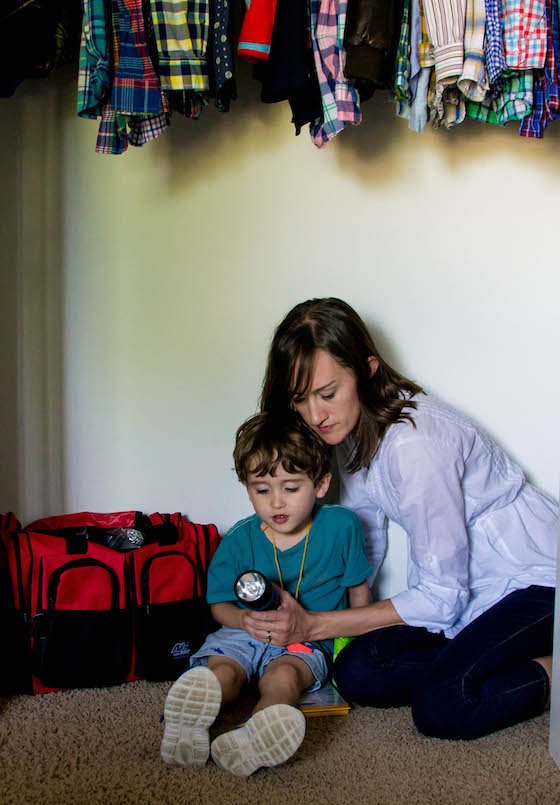
You need a safe place for shelter during a severe storm, and the moment a storm hits is not the time to find that shelter. An ideal shelter for a tornado or hurricane is an interior room with no windows. A basement is great if you have one. If tornadoes regularly make appearances in your area, you may even consider having a storm shelter installed on your property. However, you have to do the best you can with where you are at the time. If you live in a mobile home, that is never a safe place to be during a tornado or hurricane. A car is never a safe place in a tornado. In areas prone to severe weather like tornadoes, there are often public shelters to which you can retreat. You would be wise to have a permanent, safe structure to evacuate to during a tornado watch just in case and during a hurricane when forecasters indicate one is headed your way.
3. Develop a Disaster Plan
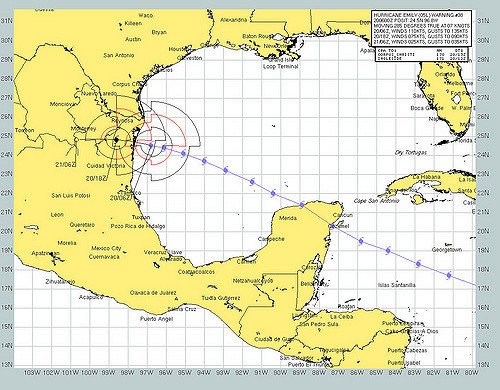
Your whole family can be prepared for dealing with severe weather like hurricanes and tornadoes if you have a plan that everyone is aware of and is able to follow. Talk about how to respond to the types of emergencies that can occur in your area. If you live in Oklahoma, hurricanes aren’t a threat but tornadoes are, so prepare for tornadoes. The Red Cross offers the following suggestions for developing a plan:
- Give everyone in the family a job and work as a team to prepare.
- If you are separated, have 2 places to meet. 1 right outside your home and 1 outside your neighborhood in case you can’t return or have to evacuate.
- Have an emergency contact out of your area and make sure everyone in your family has that contact information with them.
- Have an evacuation plan and practice evacuating twice a year.
4. Have Survival Necessities Packed and Ready
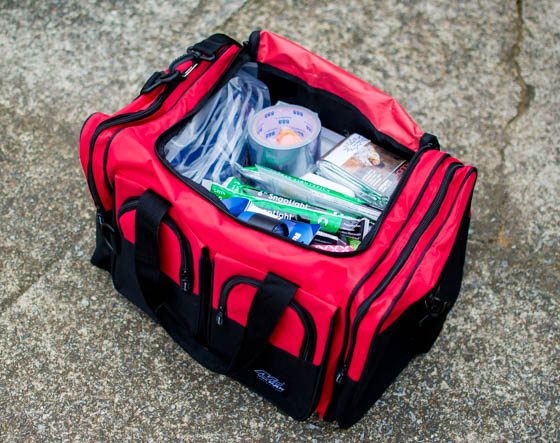
Survival necessities and supplies can make or break how your family fares during a natural disaster. If you have everything you need, you won’t have to rely on government or charitable services that can take longer than expected to get to you. It is all about keeping your family safe and comfortable no matter what comes your way. The CDC offers this list of supplies to have on hand.
Packing everything your family needs can become a daunting task and a lot of busy parents just can’t add anymore to their to-do list. To simplify your preparation, we highly recommend you leave the emergency preparation up to the professionals and purchase a kit prepackaged. Kits are available for single people or for groups. A kit is also an excellent idea because all your survival supplies will be neatly packed into a bag, making them portable. If you have to leave your home quickly and evacuate or head to a shelter you can take everything with you.
Product Recommendation
This 4 Person Severe Weather Emergency Kit from Living Rational has everything a group of 4 would need if stranded with no assistance for 72 hours. There are many items included that you wouldn’t even think of on your own that would certainly come in handy. The items are packaged in waterproof bags in case of heavy rains, floods or standing water. The red duffle bag holds it all, making it easy to transport.
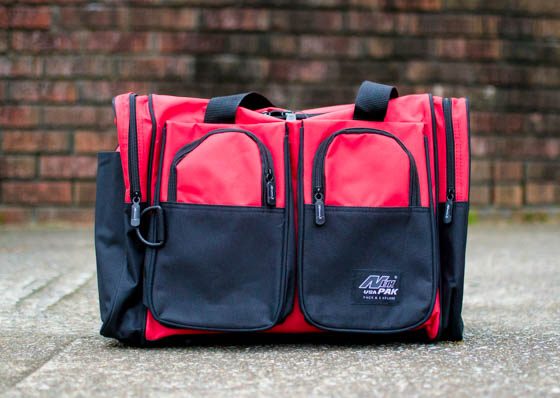
Included in this incredible kit are all the essential survival supplies like food, water, radios, flashlights, waterproof matches, duct tape, a premium first aid kit, and light sticks, plus mylar sleeping bags and body warmers.
A good kit can make the difference between barely surviving and thriving through an emergency. Leave it up to the professionals to keep your family safe. You can go into any weather emergency with a lot less worry knowing that your family will be taken care of for at least 72 hours without any outside help in a worst case scenario storm.
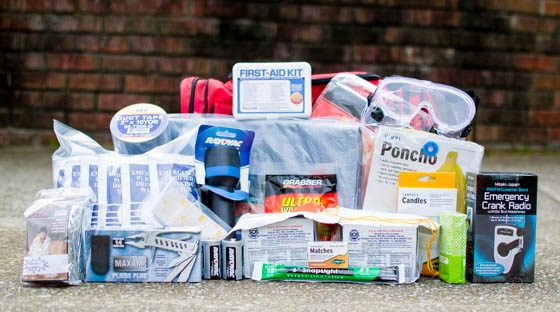
5. Radio and Phone Alerts
Alerts that warn you of a storm on the way or of changes in a dangerous storm are available several ways. Obviously, you can watch the news on your television but when the power goes out, that won’’t help at all. To ensure that you get vital alerts that can save lives, have a crank powered weather radio on hand. A radio like this should be part of your survival necessities. One is included in the 4 Person Severe Weather Emergency Kit we recommend. Even if you lose power for an extended period of time, a crank radio will still allow you to stay connected to what is going on during and in the aftermath of a severe storm.
The majority of wireless phones now receive Wireless Emergency Alerts (WEA). These government alerts are free of charge. Through WEAs you are notified about extreme weather, local emergencies requiring action or evacuation, AMBER alerts, and Presidential ALERTS during a national emergency. Here is more information on Weather Emergency Alerts.
6. What to Wear
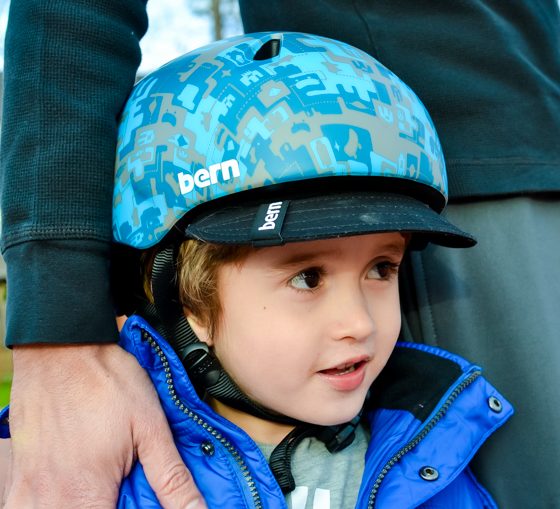
During a tornado, wear a helmet. A simple bicycle helmet can save lives. Children that are injured in tornadoes most often sustain head injuries from being thrown around in the winds. Make sure you have good shoes with you when you go into your safe place. After a tornado or hurricane, you may end up walking somewhere for help or to help others. Walking around in the debris or standing water from a storm is dangerous.
Being separated from your family is also a danger during severe storms like tornadoes and hurricanes. Consider having everyone wear some sort of identification bracelet. If you are separated, an I.D. bracelet will help you be reunited more quickly. If anyone has special medical needs, include those on the bracelet as well as to alert first responders or medical professionals. These bracelets work well for children. They are also available in adult size. Finally, ensure that your pets have collars with tags on them and if they are microchipped, make sure their microchip has the most current information.
7. Have an Evacuation Plan
If you live in an area near the coast, a large enough hurricane can send you suddenly packing. So you aren’’t scrambling to figure out where to go at the last minute, develop your evacuation plan ahead of time. Research the best route out of town and find some alternate routes as well in case traffic is horrendous or roads unexpectedly close. Have a paper map on hand. If you have pets, look up pet friendly hotels outside your area on your evacuation route. If you lose power and can’’t charge a device, paper will save the day.
Also, if a hurricane is looming and evacuation is a possibility, go ahead and fill your vehicles up with gas before there is a rush to leave. Often when bad storms suddenly turn toward an area and evacuation begins, gas stations run out of gas.
8. Water Supply to Survive
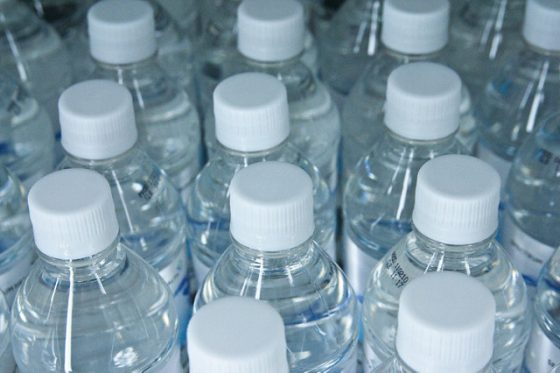
In case of an emergency where water is not readily available, the Center for Disease Control (CDC) states that you need at least one gallon of water per person, per day for 3 days. Keep in mind that children, pregnant women, and those who are sick need more water. If you live in a particularly hot climate you may also need more water. Pets like cats and dogs need about 1 gallon of water for 3 days. The safest way to have water for an emergency is to keep the right amount of purchased, bottled water for your family in your home at all times.
9. Prepare Your Home and Yard
While you won’’t have time to prep your yard if a tornado suddenly touches down, you should have time to prepare your yard and the outside of your home before a hurricane hits. Before hurricane season begins, tighten and repair loose gutters. Use Fiskars tree loppers to trim or remove tree branches near the house that could be knocked into the house by high winds. When a hurricane is expected, put up all lawn furniture and other loose items that could blow around. If you have storm shutters, you will need to get those in place. Look around your yard and if there is a way to prevent something in your yard from flying around and causing damage by removing it or securing it, do so.
10. Find a Shelter ahead of time
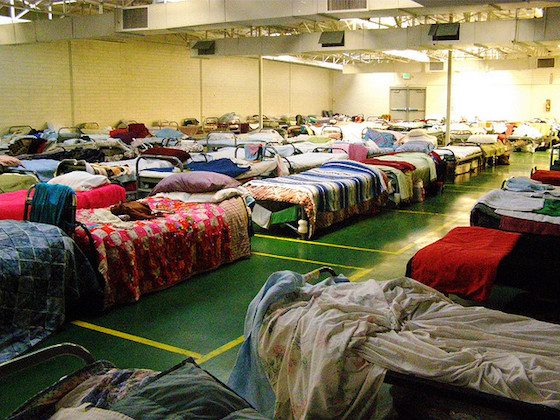
When you need a shelter, it is probably too late to find one. Know where the closest local shelters are near you before a storm occurs. If you have pets, only some shelters are pet friendly. Find a pet friendly shelter or know that you could have to leave your pet behind in unsafe conditions. Space in shelters is limited so only plan on bringing a small amount of items with you. Items you should definitely bring include any medications and medical supplies you need, baby formula, snacks and toiletries.
Severe weather is scary, especially with kids involved. We all want to protect our kids as best we can. Knowledge and thoughtful preparation can help protect your family, children and pets from being stranded in the aftermath of a tornado or hurricane. Talk to your kids, come up with a plan and make sure you have everything you need on hand so you can go into tornado and hurricane season with careful confidence.
Photo Credits: Kristen, Mary-Frances Main, Forsaken Fotos, Jason Devaun, Robin Zebrowski, Steven Depolo, Marion Doss, Ms. Phoenix
Sources: National Weather Service – Watch vs. Warning, Hurricane Preparedness – Be Ready, Red Cross Hurricane Preparedness, Ready – Hurricanes, CDC Emergency Preparedness – Tornadoes, How To Prepare for a Tornado, Severe Weather Safety Tips to Save Your Life, Can Helmets Cut Tornado Deaths?
























